**Click here for a pre recorded training session for additional help and guidance - Adding Asset Types for commodities (Release 12.21) which includes how to add Assets, view and manage Meter Relationships and Create Accounts, Meters, Supply Points etc
Meter Relationships gives you:
This sections shows you how to create the Parent/Child hierarchy, with the introduction of the Meter Relationships popup. This popup shows the relationship between the Parent and Children in relation to Meters, Virtual Meters and Sub Meters. It also shows any errors or warnings regarding analysis of the data in the Channels.
The Tree expands to show all of the Meters / Sub Meters / Virtual Meters for the Site and you can see the Parent / Child relationship. There is also the capability to allow you change the relationships from this popup.
The Asset Type is also displayed in the popup. Click for more information on Asset Types.
Use the Gap analysis at the bottom of the popup enables you to see if the data in the Child Meters add up to the data in the Main Meter. For example, you may have a Main Meter that has 4 Sub Meters, and one of those Sub Meters, also has two Virtual Meters related to it. See below:

The popup is accessible from the Data Selector by selecting the Site or Meter or from the Data Management Activity.
If you have Parent and Child Meters, the relationship can be added to the Meter Editor to enable you to the details within the Meter Relationship popup.
This is added to the Child Meter:
or
Once in the Meter Editor, add the Relationship:
If the Parent Meter is in the same Site as the Child Meter:
If the Parent Meter is in a different Site to the Child Meter:
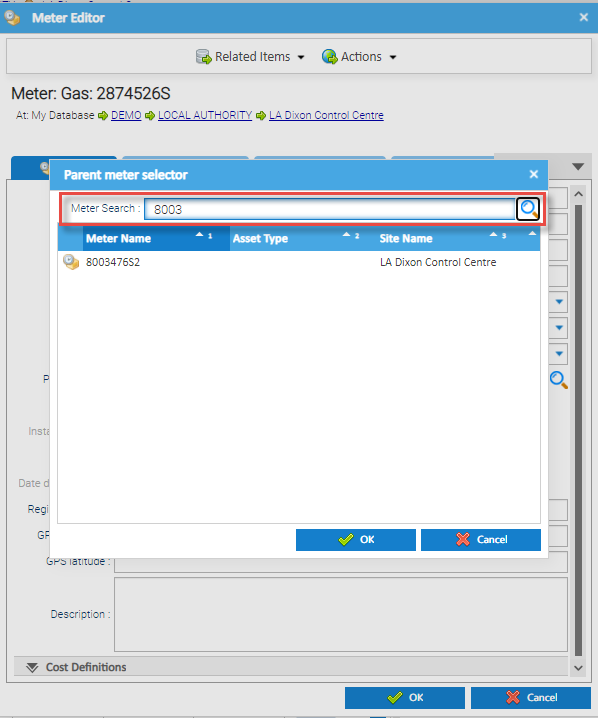
or
The Parent meter selector popup shows the Meter Name, along with any Asset Type that has been assigned and the Site Name
The Meter Editor is updated with the Parent Meter details.
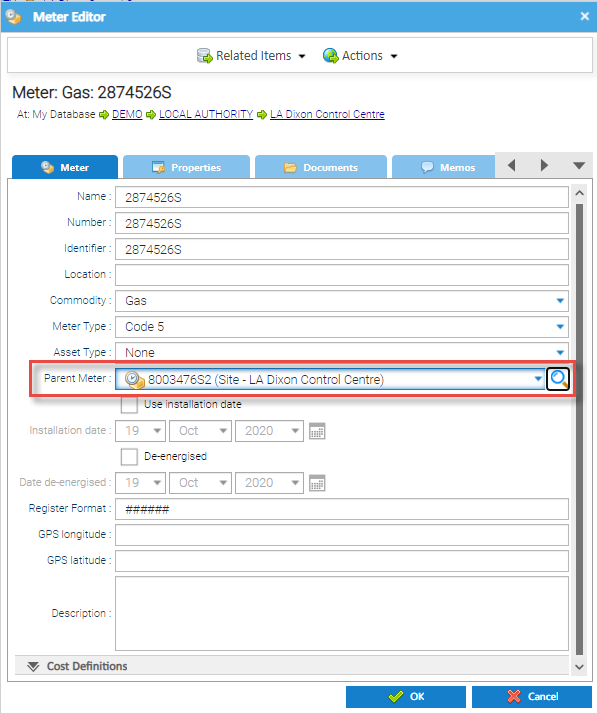
or
See below on how to access the Meter Relationships popup
If the Parent/Child relationships do not exist OR they are not correct, you can re-order the Meters.
Once Relationships have been added, they can be viewed in the Meter Relationships popup.
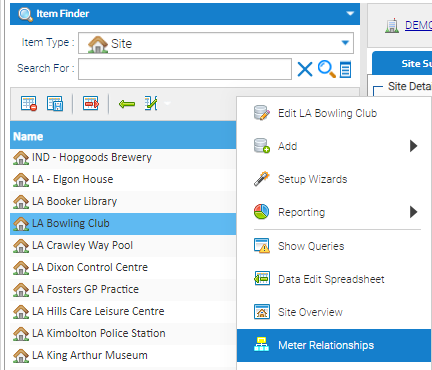
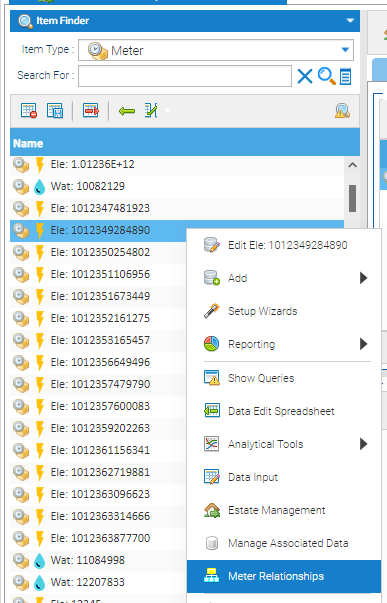
or
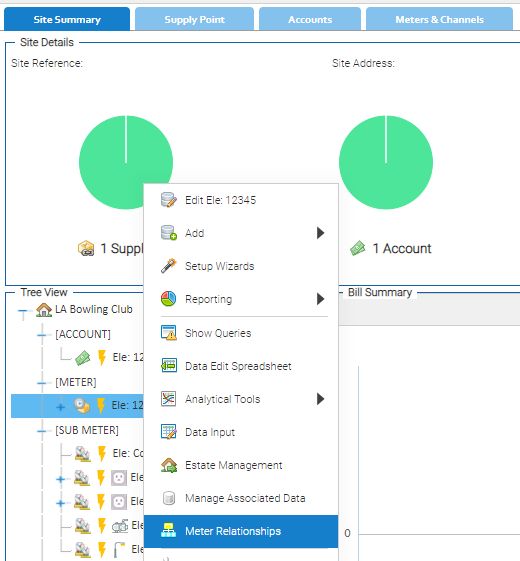
or
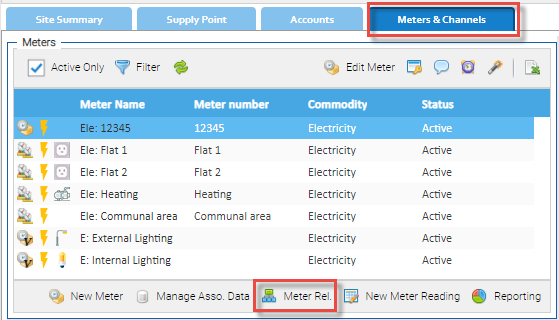
or
From the Meter or Site Editor:
Note: If you access the popup from the Site, you need to choose the Commodity you want to view

The Meter Relationships popup will show the the relationship for the Meters, Sub Meters and Virtual Meters
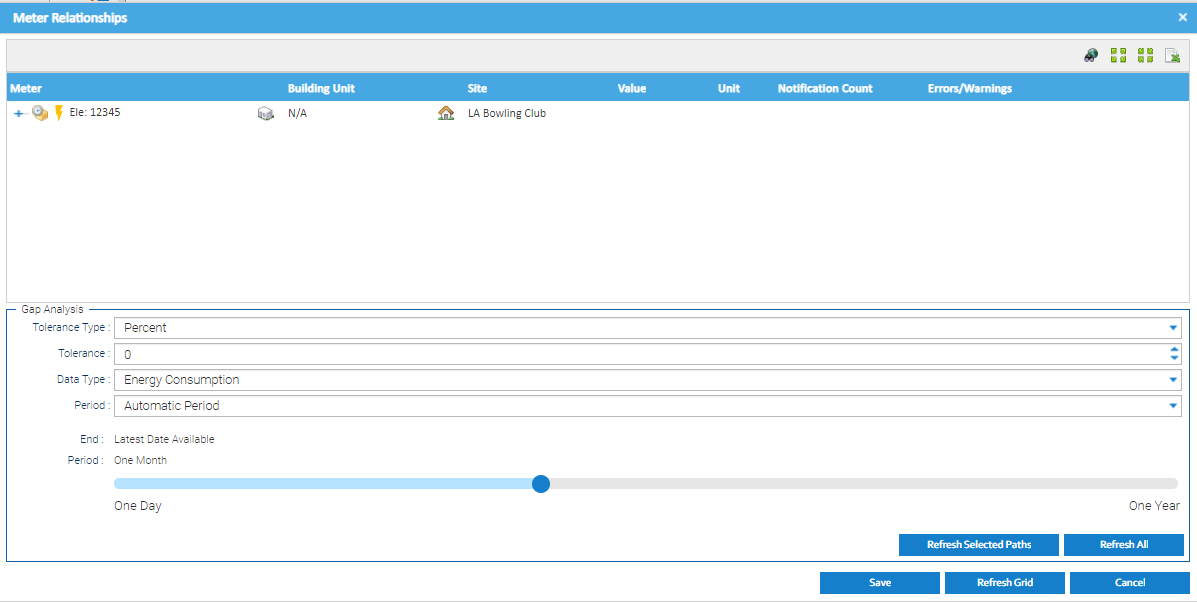
If you have access the popup from the Meter, the Meter will be highlighted
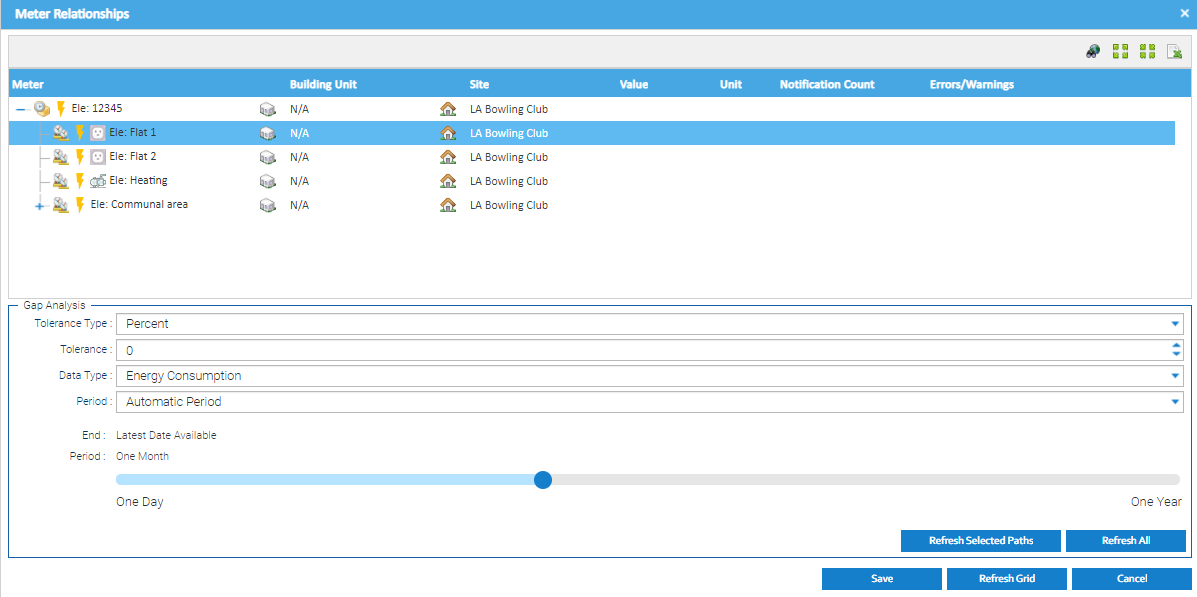
At the top left of the popup are 4 Icons:
 Data Monitoring - Opens the Data Monitoring Activity
Data Monitoring - Opens the Data Monitoring Activity Expand All - expands the Items in the tree
Expand All - expands the Items in the tree Collapse All - collapsing all the open Items in the tree
Collapse All - collapsing all the open Items in the tree Export to Excel - exports the data to Excel
Export to Excel - exports the data to ExcelThis section shows what is connected as Parent and Children. The connection is created using the Meter Editor and completing the Asset Type and Parent Meter fields (see above)
or
 to expand all
to expand all 
Note: you can click  to collapse all
to collapse all
The columns will show you the Meter, Building Unit (if applicable) and Site.
Once the Gap Analysis is used, the Value, Unit, Notification and Error/Warnings columns will show details (see below).
If the Parent/Child relationships do not exist OR they are not correct, you can re-order the Meters.
Right click on a Meter for the standard options such as Edit, Add, Set up Wizard, Estate Management etc. You will also see Expand and Collapse options
On entry to the Meter Relationship popup, the Gap Analysis will not show until you have completed the bottom section.
Once completed, you can see if the Parent/Child Meters add up to the same consumption (or set a percentage).

Once you have selected the above, you can then view the results:

or
The popup will update depending on the criteria chosen.
The remaining columns will populate data in the Value, Unit, Notification Count and Errors/Warnings fields
Note: Click on  to open the Data Monitoring Activity, filtered to the Site
to open the Data Monitoring Activity, filtered to the Site
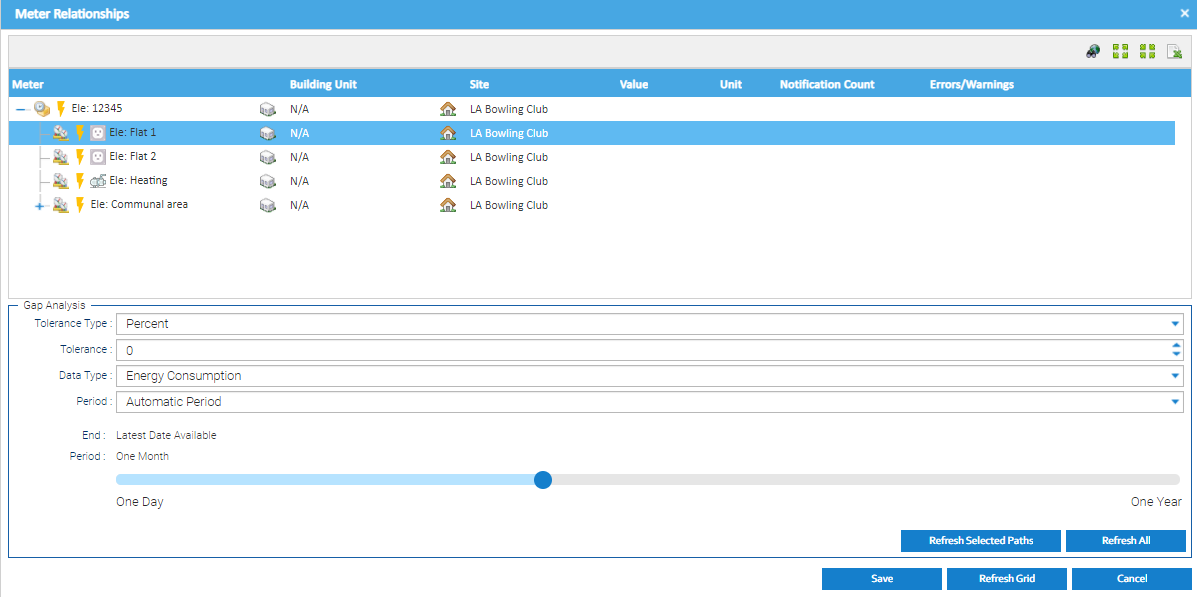
In the above example there are two calculations as there are two Parent Meters - Meter 12345 and Communal Area
If the criteria had a tolerance of 0%:

If the criteria had a tolerance of 20%:
